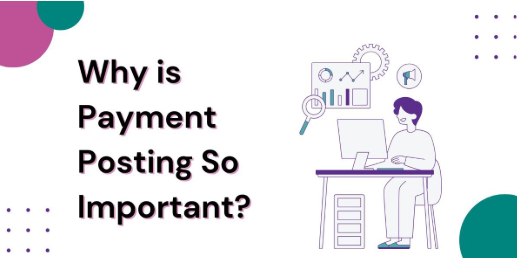For healthcare providers across the United States, few processes are as critical—or as frustrating—as provider credentialing. Whether you’re a physician opening your first practice, a nurse practitioner joining a new group, or a therapist expanding your patient base, credentialing with insurance companies is your gateway to getting paid for the care you provide.
Yet many providers underestimate the complexity and importance of this process until they’re months into waiting for approval, watching potential revenue slip away. The truth is simple: without proper credentialing and payer enrollment, insurance companies won’t reimburse you for services, leaving you to collect directly from patients or face significant revenue losses.
Understanding why credentialing is essential and how to navigate it effectively can mean the difference between a thriving practice and financial uncertainty.
Why Credentialing is the First Step to Getting Paid by Insurance Companies
For healthcare providers across the United States, few processes are as critical—or as frustrating—as provider credentialing. Whether you’re a physician opening your first practice, a nurse practitioner joining a new group, or a therapist expanding your patient base, credentialing with insurance companies is your gateway to getting paid for the care you provide.
Yet many providers underestimate the complexity and importance of this process until they’re months into waiting for approval, watching potential revenue slip away. The truth is simple: without proper credentialing and payer enrollment, insurance companies won’t reimburse you for services, leaving you to collect directly from patients or face significant revenue losses.
Understanding why credentialing is essential and how to navigate it effectively can mean the difference between a thriving practice and financial uncertainty.
What is Provider Credentialing and Why Do Insurance Companies Require It?
Provider credentialing is the formal process by which healthcare professionals verify their qualifications, training, and competency to deliver medical services. Insurance companies use this vetting process to ensure that providers in their networks meet specific standards before they’re authorized to treat covered patients and receive reimbursements.
Think of credentialing as your professional passport in the healthcare world. Just as you can’t travel internationally without proper documentation, you can’t participate in insurance networks without completing their credentialing requirements. This process protects patients by ensuring they receive care from qualified providers while protecting insurers from liability risks.
The credentialing process involves reviewing your education, training, work history, malpractice insurance, state licenses, and any disciplinary actions. Insurance companies want to verify that you’re not only clinically competent but also a reliable business partner who follows proper billing practices and maintains appropriate professional standards.
For providers, successful credentialing opens doors to:
- Regular, predictable reimbursements from major insurance carriers
- Access to larger patient populations covered by various insurance plans
- Reduced administrative burden of collecting payments directly from patients
- Enhanced practice credibility and professional standing
- Opportunities for payer contracting and negotiated rates
The Step-by-Step Provider Credentialing Process
Successfully navigating insurance enrollment requires understanding each phase of the credentialing journey. Here’s what providers can expect:
Step 1: CAQH Profile Creation and Maintenance Most credentialing begins with the Council for Affordable Quality Healthcare (CAQH) ProView system. This centralized database allows providers to enter their information once and share it with multiple insurance companies. Creating a comprehensive CAQH profile with accurate, up-to-date information is crucial since many payers pull directly from this system.
Step 2: Individual Payer Applications
While CAQH streamlines much of the process, each insurance company typically requires additional forms specific to their network. These applications often request information beyond what’s in your CAQH profile, including references, hospital affiliations, and detailed practice information.
Step 3: Document Collection and Verification Gathering required documentation can be time-consuming. You’ll need current copies of your medical license, DEA registration, malpractice insurance certificates, board certifications, CV, and practice location details. Each document must be current and properly formatted according to payer requirements.
Step 4: Application Submission and Follow-up Once applications are submitted, the waiting game begins. However, successful credentialing requires active follow-up. Applications can stall for various reasons, from missing documents to administrative backlogs. Regular communication with payer representatives helps keep your application moving forward.
Step 5: Primary Source Verification Insurance companies conduct primary source verification, confirming your credentials directly with issuing organizations. This includes contacting medical schools, residency programs, state licensing boards, and previous employers.
Step 6: Committee Review and Approval After verification, your application goes before the insurance company’s credentialing committee for final review. This committee evaluates whether you meet their standards for network participation.
Step 7: Contract Negotiation and Enrollment Upon approval, you’ll receive contracts outlining reimbursement rates, billing procedures, and network obligations. Once signed, you’re officially enrolled and can begin submitting claims for covered services.
The entire process typically takes 90-120 days, though delays are common and can extend timelines significantly.
Common Credentialing Challenges Healthcare Providers Face
Despite its importance, provider credentialing presents numerous obstacles that can frustrate even experienced healthcare professionals:
Application Delays and Administrative Bottlenecks Insurance companies often face backlogs that can extend credentialing timelines well beyond projected dates. These delays directly impact your ability to treat insured patients and generate revenue from your services.
Complex Documentation Requirements Each payer has unique requirements and preferred formats for documentation. What works for one insurance company may be rejected by another, creating confusion and additional work for busy providers.
Inconsistent Communication Many providers report difficulty reaching credentialing representatives or receiving updates on application status. This lack of communication makes it challenging to address issues promptly or understand where applications stand in the review process.
Frequent Document Expiration
Credentials have varying expiration dates, and keeping everything current requires careful tracking. A single expired document can halt the entire credentialing process, creating unexpected delays.
CAQH Credentialing Complications While CAQH ProView is designed to simplify credentialing, many providers struggle with the platform’s interface, frequent requests for re-attestation, and ensuring information syncs properly with individual payers.
Payer-Specific Requirements Beyond standard credentialing, some insurance companies require additional steps like site visits, specific training certifications, or participation in quality programs before approving providers for their networks.
Follow-up and Tracking Challenges Managing multiple applications across different payers while maintaining your practice requires significant time and organizational skills that many providers lack.
These challenges often result in extended periods without insurance reimbursements, forcing providers to either turn away insured patients or provide services while waiting months for approval and payment.
How Malakos Healthcare Solutions Streamlines Your Credentialing Process
At Malakos Healthcare Solutions, we understand that credentialing shouldn’t prevent you from focusing on patient care. Our comprehensive medical billing services include specialized credentialing support designed to get you enrolled faster and more efficiently than handling the process alone.
Expert Navigation of Complex Requirements Our credentialing specialists understand the unique requirements of major insurance carriers and can prepare your applications correctly the first time. We know which documents each payer requires, their preferred formats, and how to avoid common pitfalls that cause delays.
Proactive Application Management Rather than submitting applications and hoping for the best, we actively manage your credentialing process. Our team maintains regular contact with payer representatives, tracks application progress, and addresses issues before they become major delays.
CAQH Profile Optimization We ensure your CAQH profile is complete, accurate, and optimized for multiple payer requirements. Our team handles re-attestation requirements and keeps all information current to prevent processing delays.
Comprehensive Document Management
We maintain organized files of all your credentialing documents, track expiration dates, and ensure renewals are submitted promptly. This proactive approach prevents lapses that could interrupt your ability to treat insured patients.
Expedited Follow-up and Communication Our established relationships with payer credentialing departments often allow us to expedite reviews and resolve issues more quickly than individual providers can achieve on their own.
Transparent Progress Reporting We provide regular updates on your credentialing status, so you always know where your applications stand and when you can expect to begin submitting claims to new payers.
By partnering with Malakos Healthcare Solutions for your credentialing needs, you can focus on providing excellent patient care while we handle the administrative complexities of payer enrollment and insurance contracting.
Secure Your Revenue Stream with Professional Credentialing Support
Provider credentialing is not just a bureaucratic hurdle—it’s the foundation of a successful healthcare practice’s revenue cycle management. The sooner you complete credentialing with major insurance carriers, the sooner you can begin generating consistent income from the full range of patients seeking your services.
However, the credentialing process doesn’t have to be a source of stress and revenue delays. With proper expertise and dedicated support, you can navigate payer enrollment efficiently and start building the sustainable practice you’ve worked so hard to establish.
Don’t let credentialing challenges prevent you from reaching your full potential as a healthcare provider. The patients in your community need your expertise, and you deserve to be compensated fairly and promptly for the care you provide.
Ready to streamline your credentialing process and start getting paid faster? Struggling with insurance credentialing or payer enrollment? Malakos Healthcare Solutions can simplify the process and get you enrolled faster. Our experienced team handles everything from CAQH profile management to payer contracting, so you can focus on what you do best—caring for patients. Contact us today to get started and take the first step toward a more profitable practice.









